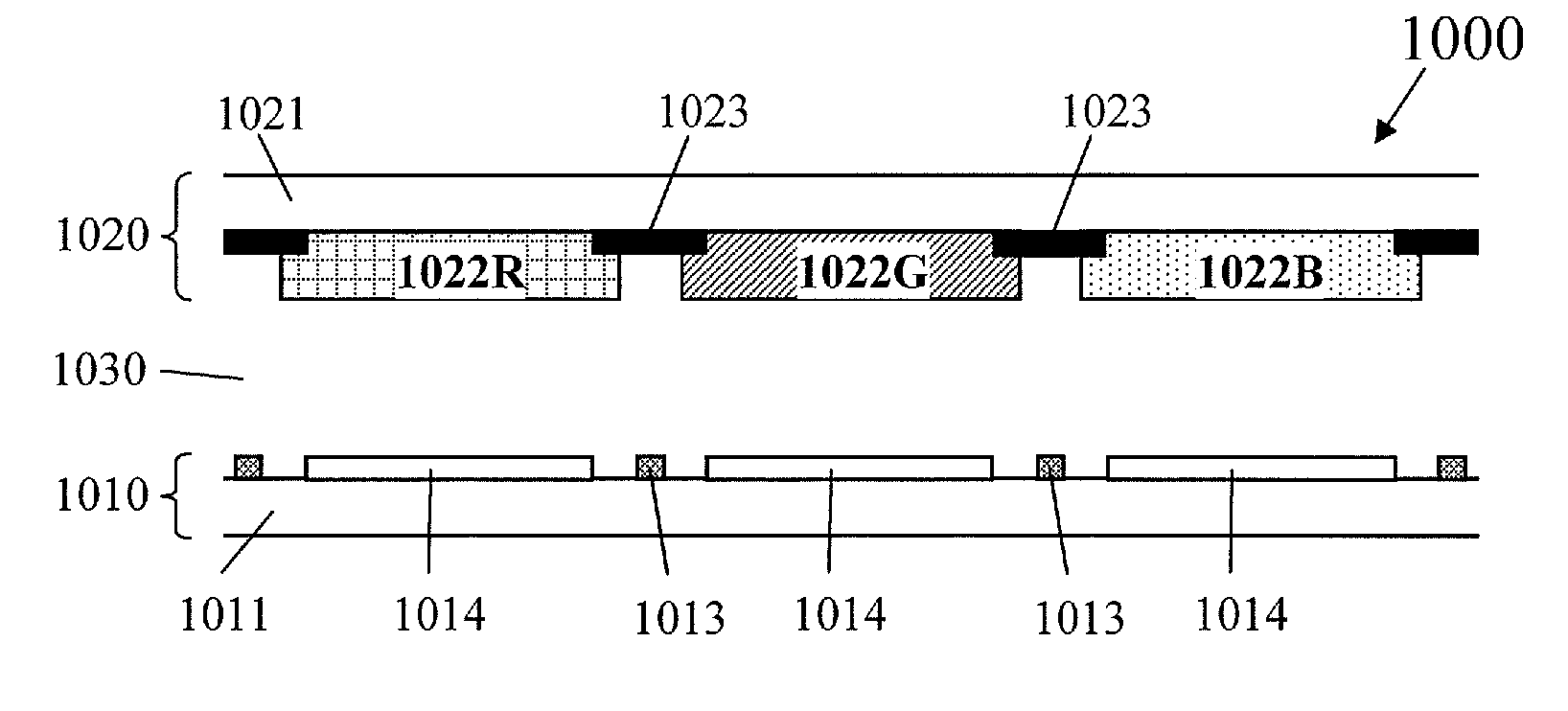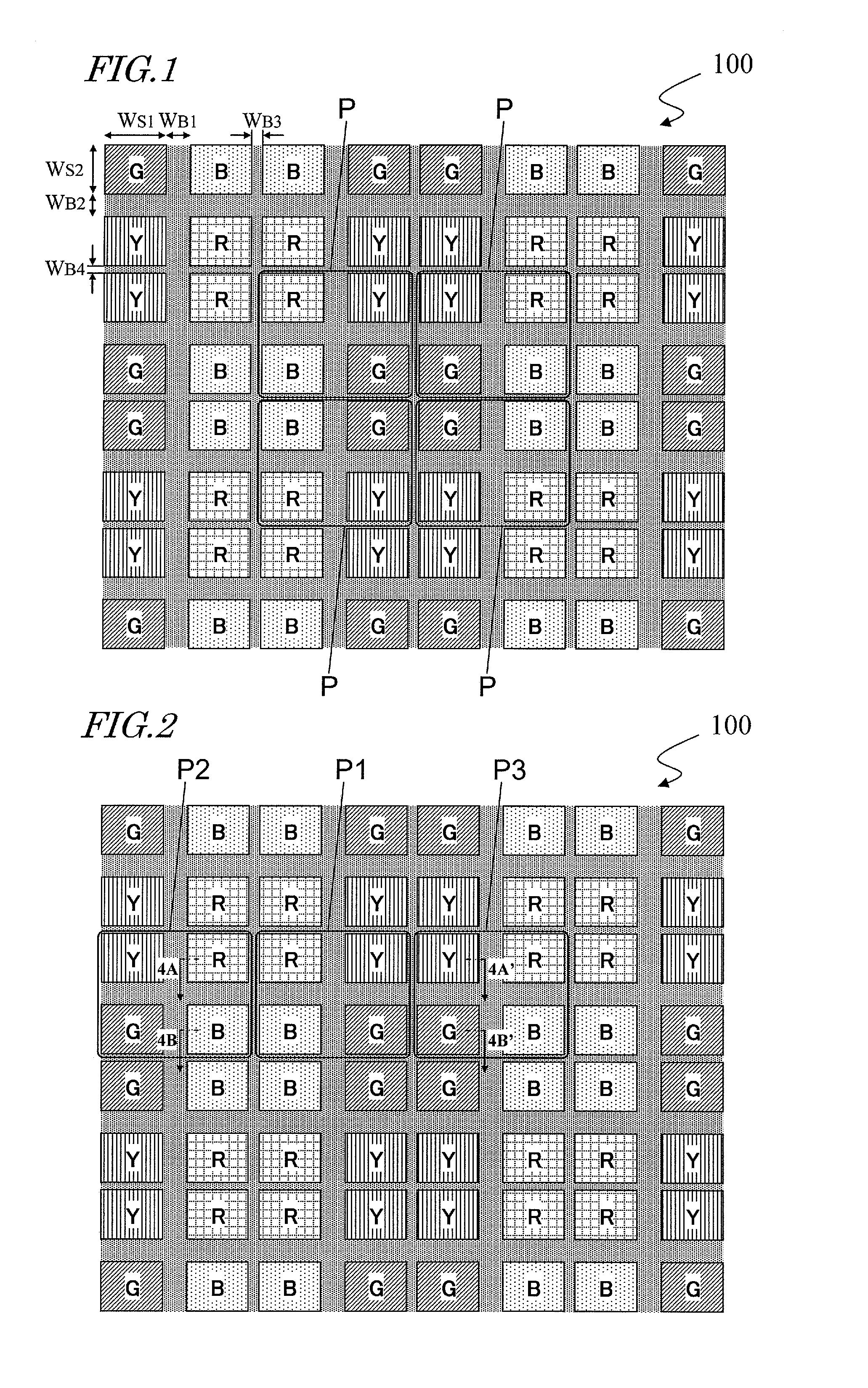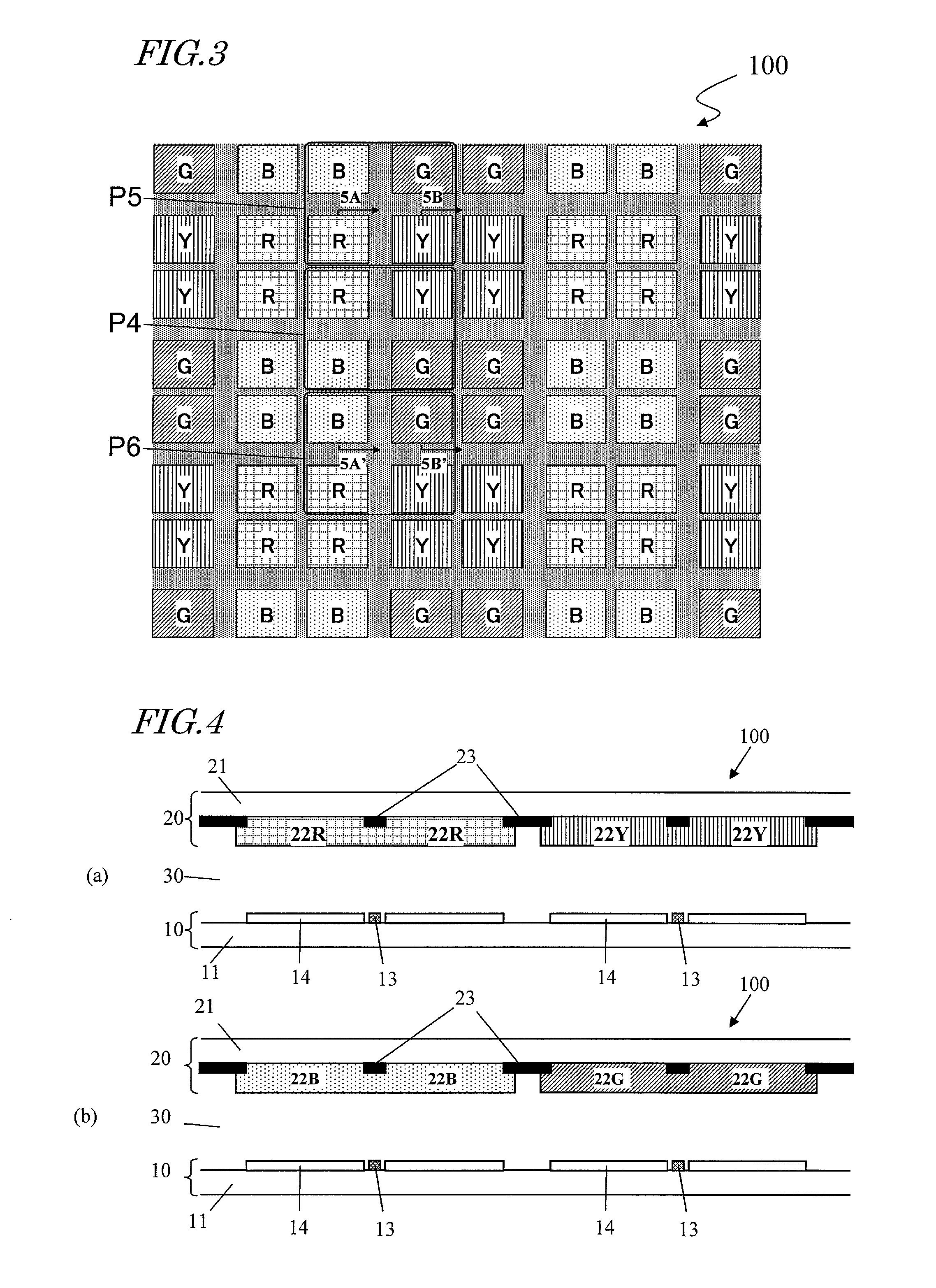Display device and color filter substrate
- Summary
- Abstract
- Description
- Claims
- Application Information
AI Technical Summary
Benefits of technology
Problems solved by technology
Method used
Image
Examples
embodiment 1
[0065]FIG. 1 illustrates a liquid crystal display device 100 as a first specific preferred embodiment of the present invention. As shown in FIG. 1, the liquid crystal display device 100 has a number of pixels P, which are arranged in columns and rows to form a matrix pattern.
[0066]Each of these pixels P is defined by four subpixels that are arrange in two columns and two rows to form a matrix pattern in the pixel P itself. Specifically, the four subpixels that define each pixel P are red, green, blue and yellow subpixels R, G, B and Y representing the colors red, green, blue, and yellow, respectively.
[0067]The liquid crystal display device 100 is a multi-primary-color liquid crystal display device that carries out a display operation using the four primary colors (i.e., red, green, blue, and yellow) represented by the red, green, blue, and yellow subpixels R, G, B and Y, respectively.
[0068]In the conventional multi-primary-color liquid crystal display device 900 shown in FIG. 24, ev...
embodiment 2
[0095]FIG. 7 illustrates a liquid crystal display device 200 as a second specific preferred embodiment of the present invention. Just like each pixel P of the liquid crystal display device 100, each of multiple pixels P of this liquid crystal display device 200 is also defined by red, green, blue, and yellow subpixels R, G, B and Y, which are arranged in two columns and two rows to form a matrix pattern. In the liquid crystal display device 200 of this preferred embodiment, however, each pair of pixels P that are adjacent to each other in the row direction have mutually different arrangements of subpixels but each pair of pixels P that are adjacent to each other in the column direction have the same arrangement of subpixels. Hereinafter, such an arrangement will be described in further detail with reference to FIGS. 8 and 9.
[0096]As shown in FIG. 8, when attention is paid to a set of three arbitrary pixels that are arranged in line in the row direction, if the central one of the thr...
embodiment 3
[0108]FIG. 13 illustrates a liquid crystal display device 300 as a third specific preferred embodiment of the present invention. Each of the pixels P of this liquid crystal display device 300 is defined by six subpixels that are arrange in two columns and three rows to form a matrix pattern in the pixel P itself. Specifically, the six subpixels that define each pixel P consist of not only red, green, blue and yellow subpixels R, G, B and Y but also cyan and magenta subpixels C and M representing the colors cyan and magenta, respectively.
[0109]The liquid crystal display device 300 is a multi-primary-color display device that carries out a display operation using the six primary colors (i.e., red, green, blue, yellow, cyan and magenta) represented by the red, green, blue, yellow, cyan and magenta subpixels R, G, B, Y, C and M, respectively.
[0110]In the liquid crystal display device 300 of this preferred embodiment, each pair of pixels P that are adjacent to each other in the row direc...
PUM
 Login to View More
Login to View More Abstract
Description
Claims
Application Information
 Login to View More
Login to View More - R&D
- Intellectual Property
- Life Sciences
- Materials
- Tech Scout
- Unparalleled Data Quality
- Higher Quality Content
- 60% Fewer Hallucinations
Browse by: Latest US Patents, China's latest patents, Technical Efficacy Thesaurus, Application Domain, Technology Topic, Popular Technical Reports.
© 2025 PatSnap. All rights reserved.Legal|Privacy policy|Modern Slavery Act Transparency Statement|Sitemap|About US| Contact US: help@patsnap.com



